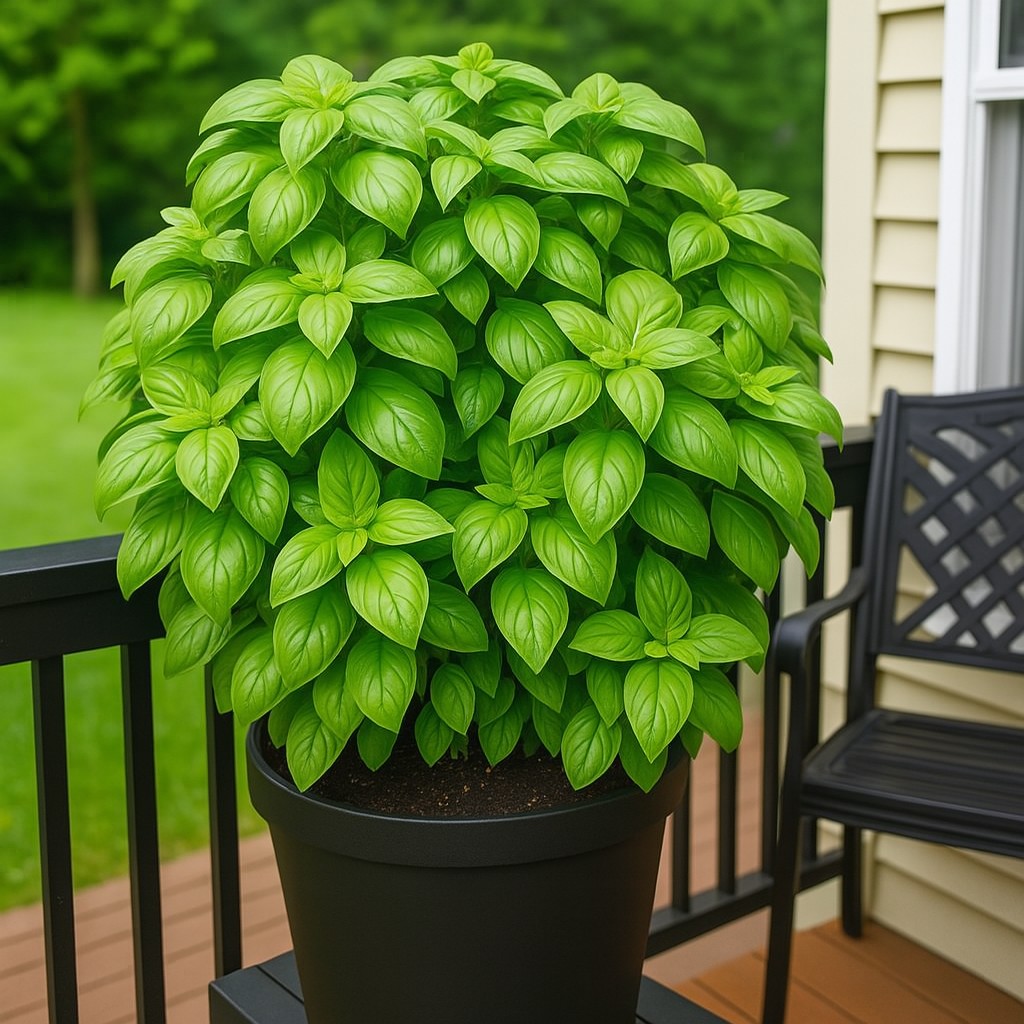ADVERTISEMENT
ADVERTISEMENT
Basil is one of the most popular and fragrant herbs used in kitchens worldwide. Its fresh, sweet aroma enhances countless dishes, from pasta sauces to salads, and having fresh basil at your fingertips can elevate your cooking to the next level. The good news is that growing basil is surprisingly easy—even if you have no previous gardening experience. Whether you have a backyard garden, a balcony, or just a sunny windowsill, basil can thrive with minimal effort.
This guide will help you grow healthy basil from seed or seedlings, maintain it through its growing cycle, and harvest fresh leaves to enjoy in your kitchen.
ADVERTISEMENT
Why Grow Basil?
Before diving into how to grow basil, it’s worth understanding why it’s a great choice for beginners:
Easy to grow: Basil adapts well to different growing conditions and is quite forgiving.
Fast-growing: You’ll see visible growth within weeks, offering quick rewards.
Compact: Ideal for small spaces, even a sunny windowsill is enough.
ADVERTISEMENT
Versatile: Fresh basil leaves can be used in cooking, teas, and natural remedies.
Pest-resistant: Basil’s aroma deters many common pests.
Choosing the Right Variety
Basil comes in several varieties. Some of the most popular for beginners include:
Sweet Basil: The classic variety used in Italian cooking.
ADVERTISEMENT
Genovese Basil: Known for large leaves and strong flavor.
Thai Basil: Has a spicy, anise-like aroma, great for Asian dishes.
Purple Basil: Adds a colorful touch to your garden and kitchen.
Choose the variety you enjoy most or try a few to see which grows best in your environment.
ADVERTISEMENT
Starting Basil from Seed or Seedlings
You can start basil either by planting seeds or buying young plants from a nursery.
Seeds: Plant basil seeds indoors about 6 weeks before the last frost if you live in cooler climates. Use seed trays or small pots filled with seed-starting mix. Lightly cover seeds with soil and keep moist.
Seedlings: If you want a head start, purchase young basil plants from a nursery or garden center and transplant them into your own pots or garden beds.
Soil and Container Requirements
Basil prefers well-draining, nutrient-rich soil with a neutral to slightly acidic pH (6.0 to 7.5).
If growing in pots, use high-quality potting mix.
Ensure containers have drainage holes to avoid waterlogging.
Choose pots that are at least 6–8 inches deep to support healthy root growth.
Ideal Light and Temperature
Basil loves sunlight. It requires at least 6 hours of direct sunlight daily to grow vigorously.
Place pots or garden beds in a sunny spot, such as a south-facing window or balcony.
If natural light is limited, supplement with a grow light.
Basil grows best in temperatures between 70°F and 85°F (21°C to 29°C).
Protect plants from cold drafts or sudden temperature changes.
Watering Basil Properly
Watering correctly is vital for basil health:
Keep the soil consistently moist but not soggy.
Water when the top inch of soil feels dry.
Water at the base of the plant to avoid wetting the leaves, which can encourage disease.
Reduce watering during rainy periods if planted outdoors.
Fertilizing Your Basil
Feed basil every 4–6 weeks during the growing season for best results:
Use a balanced, water-soluble fertilizer diluted to half strength.
Alternatively, use organic compost or worm castings mixed into the soil.
Avoid over-fertilizing, which can reduce flavor and cause excessive leaf growth.
Pruning and Harvesting
Pruning basil encourages bushier growth and prolongs its productive life:
Once your plant reaches about 6 inches tall, pinch off the top two sets of leaves.
Regularly pinch back flower buds as they appear to prevent the plant from going to seed early.
Harvest leaves as needed by snipping individual stems just above a leaf node.
Harvest in the morning when leaves are most flavorful.
Dealing with Common Problems
Even beginners can manage these typical issues:
Wilting: Usually caused by underwatering or extreme heat. Water deeply and provide shade during hot afternoons.
Yellowing leaves: May signal overwatering or nutrient deficiency. Adjust watering and feed your plant.
Pests: Aphids and whiteflies can be deterred with insecticidal soap or neem oil.
Leggy growth: Indicates insufficient light. Move the plant to a sunnier spot.
Tips for Success
Start with healthy seeds or plants.
Be consistent with watering but don’t overdo it.
Keep your basil in a sunny spot.
Prune regularly to promote growth.
Watch for pests and disease early.
Experiment with different varieties to find what works best.
Growing Basil Indoors vs. Outdoors
Indoors: Use pots with good drainage placed near a sunny window or under grow lights. Indoor basil may grow slower but can be grown year-round.
Outdoors: Plant after the last frost in well-prepared soil. Outdoor basil benefits from natural sunlight and air circulation but may need pest monitoring.
Final Thoughts
Growing basil is one of the simplest and most rewarding gardening experiences, especially for beginners. With just a few basic steps—providing good light, watering properly, and harvesting regularly—you can enjoy fresh, aromatic basil leaves right from your home.
Whether you have a garden, balcony, or a sunny corner in your kitchen, basil adapts well and brings vibrant flavor and beauty into your life. So why wait? Start your basil growing journey today and enjoy the fresh taste and satisfaction of homegrown herbs.
ADVERTISEMENT
